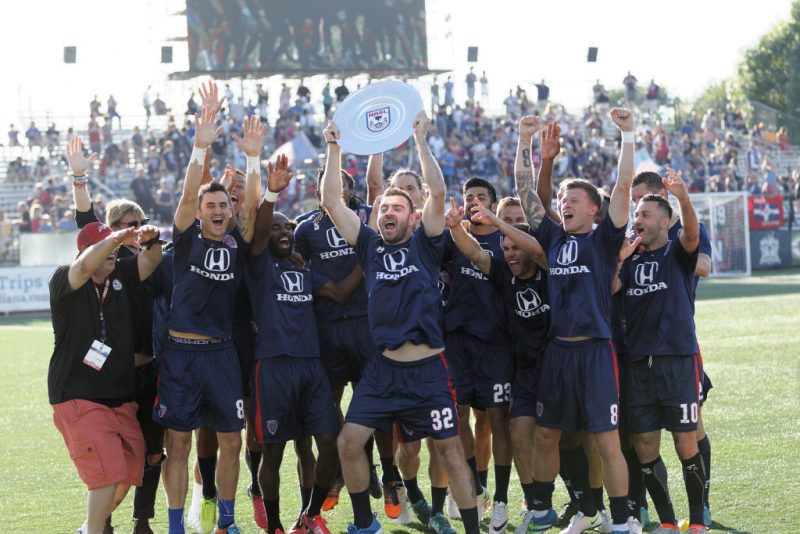There once was a time when I was a diehard NASL fan. I supported the league and saw bright things ahead. The long term goal of competing with MLS for division one status seemed to be doable.
Also, I still don’t like the move by the USL to become a hybrid independent/minor league, even though it does mirror most other countries pyramids like Spain or Germany.
So it’s not easy for me to say this, but there are at least three NASL sides that should look long and hard at moving to USL: Indy Eleven, Carolina Railhawks, and the Ottawa Fury, although Canada Soccer Association rules may make this nearly impossible for the team. And if these three teams jump ship, Tampa Bay, Jacksonville ,and even the New York Cosmos would be well served by the move to USL if it looks like NASL might fold.
And the reason is simple: money. NASL teams haven’t been able to make money with the current model and they need to consider the cost savings of USL.
The two primary costs in soccer: players and travel
For small countries like England, travel is rarely a large cost. But for larger countries, even countries the size of Germany, it’s only been relatively recently that divisions below the top level have been contested nationally and the pyramids quickly begin to break into regional leagues below the top two or three levels in most countries.
That’s because travel can be so expensive. Without TV contracts and the sponsorships top division play provides, away games bring in no revenue for teams. Moving to a regional model allows teams to constrain the costs of travel.

In the NASL, a two night stay and flights for the players and coaching personnel can cost upwards of $40,000 — a very large sum for teams wholly reliant on ticket sales, merchandise, and local sponsors to pay the bills. Only the Florida teams are able to cut costs for travel by returning the night of the game and taking buses. Every other team in the league must fly to all away games.
Proximity

For Indy Eleven, suddenly they would have at least three teams — FC Cincinnati, Louisville City, and St. Louis FC — close enough that a bus doesn’t seem an unreasonable way to travel. Carolina Railhawks would have an instate rival and two more in neighboring states. Ottawa Fury would be in between both Montreal and Toronto, giving the team more games that would not involve crossing their southern border.
Disregarding the fact that these teams in close proximity would help to drive regional rivalries, it just makes business sense to move to the USL. Even the longer trips in the USL for these NASL sides would be shorter than trips to Minnesota, Edmonton or Puerto Rico have been.
That’s because the USL is split into two conferences that don’t see many inter-conference games during the season. With more teams joining the league from NASL, the league would have more than 30 teams and could likely split into even smaller conferences to help constrain travel costs even more.
Why not?
As USL has proven, while some fans may scorn the “II” sides of MLS teams, it hasn’t appeared to really effect the drawing power of the independent sides. Both Sacramento and Cincinnati have shown that by drawing large numbers consistently to their games.
While many wish to see NASL drive the adoption of promotion and relegation in the United States, the fact remains that it is not the law of the land. These NASL clubs as business entities would be better served from a business standpoint to move into a league that would help reduce the costs associated with running a soccer team.
With more than 30 teams in the league, there’s even a chance that USL would grow big enough to create two levels and have promotion and relegation between them.
For right now though, if the goal for these clubs is to one day make lower soccer no longer a money-losing proposition, USL is the best bet.

Leave a Reply